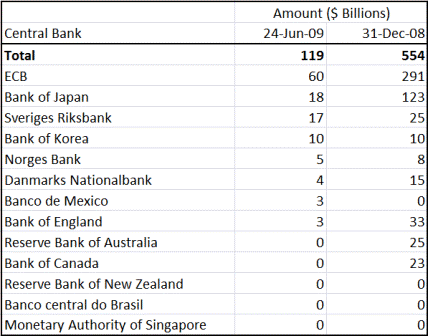[Skip to the end]
Objections to deficit spending-
1. Deficits now mean higher taxes later.
Response — Taxes function to regulate aggregate demand, not raise revenue per se.
Taxes will go up ‘later’ only if aggregate demand is ‘too high’ later which means unemployment becomes ‘too low.’
that is exactly the point of deficits today- to bring down unemployment and excess capacity
So what that statement actually says is that deficits ‘work’ and will bring down unemployment and close the output gap, hopefully to the point that taxes need be raised to cool things down.
2. How will the govt pay back all that debt?
Response — When treasury securities mature the BOE debits the holders security account and credits his transactions account.
End of story.
3. The currency will go down.
Response — maybe, maybe not, but in any case the level of the currency does not alter the real wealth of the nation. It is only an internal distributional issue and those issues can be addressed with other domestic policies.
4. We need to wait for the lower interest rates and quantitative easing to work.
Response — It is working- policy makers have it backwards- it reduces aggregate demand
Quantitative easing increases the BOE’s balances sheet as it buys securities.
It removes higher yielding securities from the private sector and replaces them with lower yielding balances at the BOE,
this reduces non government incomes and accumulations of net financial assets, and thereby reduces aggregate demand.
Lower rates reduces savers incomes more than borrowers as borrowing rates remain high due to credit concerns.
Banks net interest margins increase adding to bank earnings which have a 0 marginal propensity to consume.
Therefore lower rates reduce aggregate demand.
5. What can be done?
Response — Immediate suspension of VAT at least until aggregate demand is restored to desired levels.
However, income tax receipts will ‘automatically’ increase as GDP recovers which will ‘automatically’ moderate aggregate demand.
Keep the BOE rate at 0 to keep costs of production and investment low and thereby help control prices and promote supply to areas of demand. (removing VAT also keeps prices lower than otherwise.)
Use taxes to moderate demand when excess demand becomes a problem, not to raise revenue per se.
[top]


